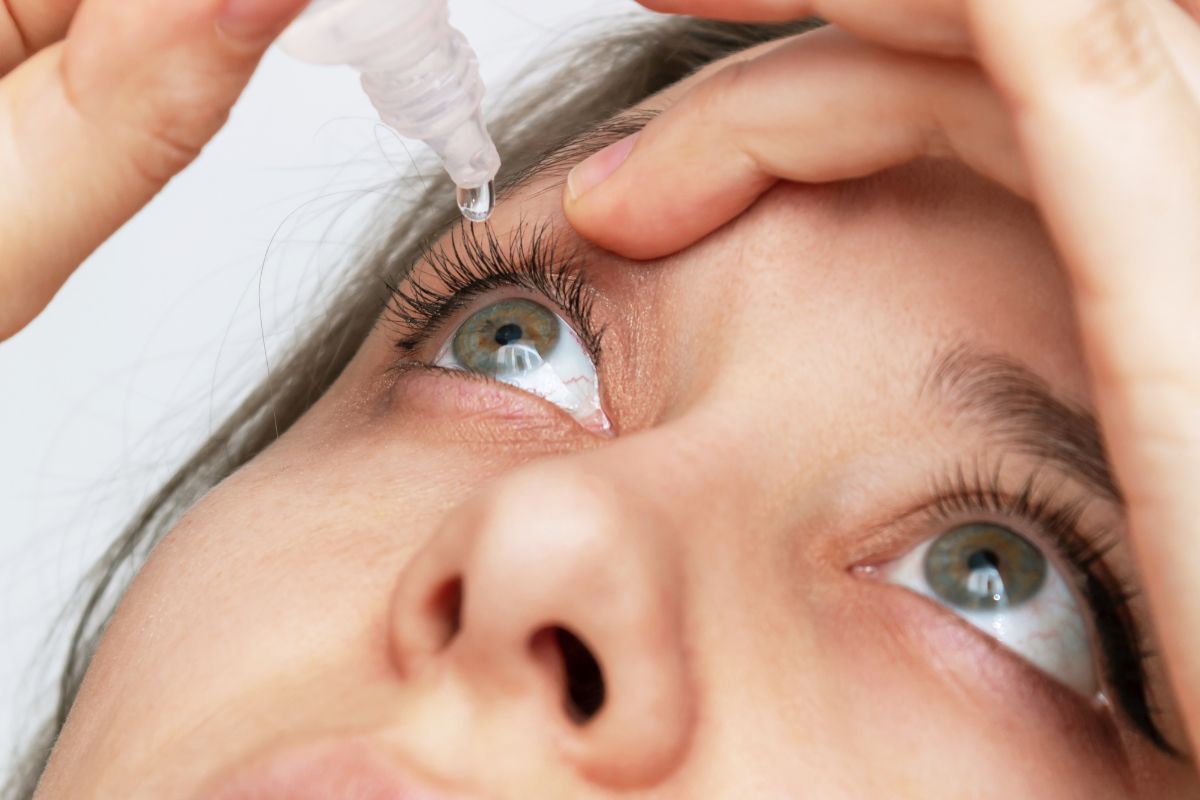The Hidden Danger of Heavy Screen Use: Causes and Prevention Strategies for Dry Eyes in 2025
In 2025, our digital world has become deeply ingrained in our daily lives. From the moment we wake up to check our smartwatches to the late-night scrolling on our tablets, screen time has skyrocketed. This constant engagement with digital devices, while offering incredible convenience and connectivity, presents a hidden danger: the increased risk of developing dry eye. This comprehensive article delves deeper into the multifaceted causes of dry eye related to heavy screen use and offers practical prevention strategies to safeguard your ocular health, providing a more detailed exploration than typically found in shorter articles.
Understanding the Dry Eye Syndrome and its Digital Connection: A Deeper Dive
Dry eye syndrome, also known as dry eye disease, is a prevalent condition affecting millions worldwide. It occurs when your eyes don't produce enough tears or when your tears evaporate too quickly. This imbalance leads to a cascade of unpleasant symptoms, including burning, itching, stinging, grittiness, redness, blurred vision, and a persistent feeling of something in your eyes. While several factors contribute to dry eye, heavy screen use is emerging as a significant and increasingly concerning culprit. The prolonged, close-up focus required for digital devices presents unique challenges to the delicate balance of our eye's tear film.
The intricate relationship between screen time and dry eye stems from several interconnected mechanisms, each contributing to the overall dryness and discomfort experienced by many digital device users:
- Reduced Blink Rate: A Critical Factor: When engrossed in a screen, our natural blink rate significantly decreases. Blinking is an essential physiological process, acting as a natural lubricant, distributing tears across the ocular surface, and washing away irritants. The reduced blink rate associated with screen use disrupts this natural lubrication process, leading to increased tear evaporation and dry eye. This effect is amplified by the intensity of focus required for digital tasks, often leading to prolonged periods of infrequent or incomplete blinks.
- Blue Light Exposure: The Invisible Threat: Digital screens emit blue light, a high-energy visible light that penetrates deeper into the eye than other visible light spectrums. Exposure to blue light can cause oxidative stress and damage to the ocular surface, compromising the integrity of the tear film. This damage can lead to tear instability and increased evaporative dryness. Studies have shown a clear correlation between blue light exposure and the development of dry eye, with prolonged exposure leading to more severe symptoms.
- Environmental Factors: The Role of Indoor Environments: The indoor environments where we often use screens are often dry, air-conditioned spaces that further exacerbate tear evaporation. The combination of reduced blinking, blue light exposure, and low humidity creates a perfect storm for dry eye development. These factors work synergistically to intensify the effects of reduced blinking and blue light exposure.
- Postural Factors: The Impact of Static Posture: The prolonged periods of static posture associated with screen use can impact tear drainage and distribution. Poor posture, often characterized by forward head posture and a lack of movement, can restrict blood flow to the eyes and influence tear production and distribution, worsening dry eye symptoms. Maintaining an upright and ergonomic posture is crucial for reducing the negative impact of postural factors on ocular health.
- Individual Susceptibility: Pre-existing Conditions: While heavy screen use is a significant contributor to dry eye, individual susceptibility also plays a crucial role. Individuals with pre-existing conditions such as Sjögren's syndrome or autoimmune diseases are at a higher risk of developing dry eye, and screen use can exacerbate these underlying conditions.
Preventing Dry Eye in the Digital Age: Comprehensive Strategies for Protection
While the modern world necessitates screen time, implementing proactive strategies can significantly mitigate the risk of dry eye and maintain optimal ocular health. These preventative measures can improve eye comfort and reduce the likelihood of developing chronic dry eye conditions. A holistic approach is crucial, combining lifestyle changes, technological adjustments, and, when necessary, supplemental treatments:
1. The 20-20-20 Rule: A Simple Yet Powerful Technique:
The 20-20-20 rule remains a cornerstone of dry eye prevention. This simple yet effective technique involves taking a 20-second break every 20 minutes to look at an object 20 feet away. This allows your eyes to refocus, reducing strain and promoting natural tear replenishment. Making this a habitual practice can significantly improve eye comfort and reduce the risk of dryness.
2. Conscious Blinking: A Conscious Effort for Hydration:
Consciously increasing your blink rate while using screens is crucial. Regular, deliberate blinking helps maintain the tear film, preventing excessive evaporation and dryness. Setting reminders, using blink-rate tracking apps, or simply becoming more mindful of your blinking patterns can enhance this practice.
3. Utilizing Artificial Tears: Temporary Relief for Dryness:
Over-the-counter artificial tears can provide temporary relief from dry eye symptoms. These lubricating drops mimic natural tears, replenishing moisture and alleviating discomfort. Choose preservative-free formulas for sensitive eyes. Artificial tears should be used as needed, supplementing, but not replacing, other proactive strategies.
4. Protective Eye Patches: Natural Soothing for Enhanced Comfort:
For more intense relief and overnight support, consider using soothing eye patches, such as the Wise Quest Soothing Eye Patches - 1-Month Care Pack. These patches offer a natural approach to relieving dryness, redness, and eye strain.  Enjoy a full month of natural eye support with our herbal patches. Designed to ease redness, dryness, and strain, this supply offers noticeable improvements in daily comfort, all while being safe and non-toxic. Made in Japan. These patches are a valuable addition to a comprehensive dry eye management plan.
Enjoy a full month of natural eye support with our herbal patches. Designed to ease redness, dryness, and strain, this supply offers noticeable improvements in daily comfort, all while being safe and non-toxic. Made in Japan. These patches are a valuable addition to a comprehensive dry eye management plan.
5. Optimize Your Environment: Creating a Supportive Atmosphere:
Improving the humidity in your workspace using a humidifier, especially during dry seasons, can significantly reduce tear evaporation and provide relief from dryness. Proper room lighting, avoiding glare from screens, minimizes eye strain and contributes to overall eye comfort. Consider positioning screens to reduce direct light exposure and using anti-glare screen protectors.
6. Regular Eye Exams: Proactive Monitoring for Early Detection:
Regular comprehensive eye exams are crucial for monitoring your eye health and detecting any potential problems early. Early detection and intervention can prevent more severe dry eye complications. Discuss your screen time habits with your ophthalmologist or optometrist for personalized recommendations.
7. Healthy Lifestyle Choices: Supporting Overall Ocular Wellness:
Maintaining a healthy lifestyle supports overall eye health. Ensuring adequate hydration, consuming a balanced diet rich in omega-3 fatty acids and antioxidants, and getting sufficient sleep all contribute to tear production and overall ocular wellness. These lifestyle choices create a foundation for healthy eyes.
8. Screen Time Management: A Balanced Approach to Digital Use:
While eliminating screen time is impractical for most, conscious management is essential. Take frequent breaks, schedule screen-free time, and practice good posture to alleviate eye strain and reduce dryness. Utilize screen time management apps to monitor and control your digital consumption.
Conclusion: Protecting Your Vision in a Digitally Driven World
In 2025, the prevalence of dry eye linked to excessive screen use highlights the crucial need for proactive prevention. By incorporating the multifaceted strategies outlined in this article, you can significantly reduce your risk of developing dry eye and maintain optimal eye health. Prioritizing eye wellness is an investment in your overall well-being, ensuring clear, comfortable vision for years to come. Remember to consult your eye care professional for personalized advice and treatment if you experience persistent or worsening dry eye symptoms. Proactive management of screen time and the adoption of preventative measures are crucial for ensuring healthy, comfortable vision in our increasingly digital world.









